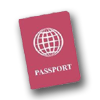The supersized statues that commemorate the heroic defence of Brest Fortress, Belarus...

The Belarussian border town of Brest is a 'Hero Fortress' - as designated by the Soviet Union for the exceptional fighting spirit shown by its defenders at the outbreak of the German-Soviet war of 1941-1945. There are 12 'Hero Cities', including Murmansk, Smolensk and Stalingrad, but just one fortress has the title.
First impressions of the city would leave anyone feeling pretty flat - just a wide main street with precious few places to eat and drink on it, and housing estates fanning from it on both sides.
But walking through the huge Soviet star of the fortress entrance heralds an exercise in remembrance on an industrial scale. The day I visited it was quiet and cold; an atmosphere only accentuated by the monolithic statuary and pock-marked fortress buildings inside.

I've always found these hyper real and masculine faces and bodies arresting, and the ensemble at Brest is one of the best there is anywhere.
The fortress was built by Russia in the mid 19th Century, and the 1918 treaty of Brest-Litovsk was signed here - which ended Russia's participation in the First World War, though on humiliating terms for the country. The German army marched into the town in 1938 in order to hand it back to the Soviets, and then again in 1941 as part of their surprise attack on the Soviet Union.
The exact numbers and dates seem to be controversial, but it is undoubtedly the case that the defenders of the fortress held out for several days against overwhelming odds. The Soviet Union lost approximately 27m dead in the Second World War and it's little wonder that the twelve Hero Cities and one Hero Fortress were heavily used for propaganda purposes during and after the war.

But a visit to the site is a very moving and profound experience, and one heightened by the sculpture park and semi destroyed old buildings.
It was slightly surreal to find a small cafe and bar inside the fortress complex, but I gratefully bustled into its warmth and sat down to eat a bowl of chickpeas and drink a larger. The complex is certainly not the sort of place I'd want to be in the night, and sadly the brutality of the fortress, the cruelty of the occupation, and the killing of the city's Jewish population by the Nazi's, to the casual visitor sort of swathes the city somewhat. At least on a winter's weekend, pavements nearly deserted, hotel dull and overheated, and locals making their way dourly back to their homes, it seems that way to me...

***
 |
Reasons to be cheerful: Brest |
 |
You can't always get what you want: |
 |
Fitting Brest into a holiday: Fez |
 |
Getting there: the small airport at Brest has seasonal flights to the Russian territory of Kaliningrad, operated by the national carrier, Belavia. Alternatively there are around 20 trains per day to Minsk, from where Belavia operates flights to many European capitals. |
 |
When to visit: best is Spring (April and May) and Autumn (September and October), when temperatures are in the mid 20’s and the skies are clear. Remember that winter nights can be cold and summer days are regularly over 40 degrees. |
 |
More info: UK-based tour operators offering trips to Belarus include Regent Holidays and Undiscovered Destinations. Or there's locally based Paradise Travel. For information on the fortress see Brest Fortress, and for general country information visit the Website of the Republic of Belarus |
 |
Visa and safety: Always check your government's travel advice before booking, and check that your travel insurance is valid in this country. See here for the British Foreign and Commonwealth Office travel advice. |





